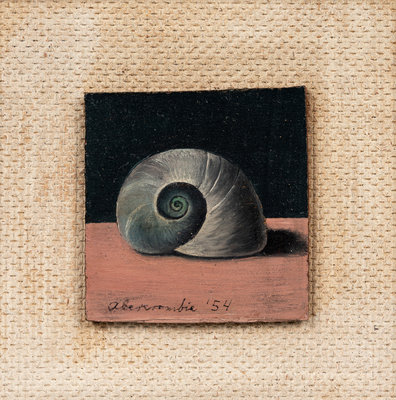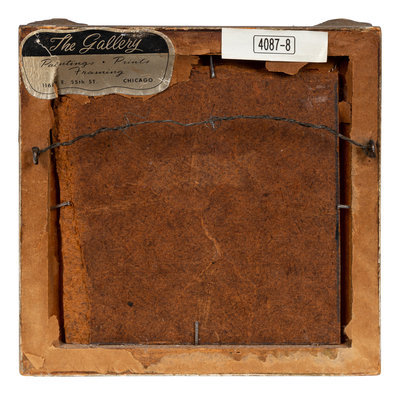Condition Report
Contact Information
Auction Specialist
Lot 31
Lot Description
We are grateful for the research conducted by Susan Weininger, Professor Emerita, Roosevelt University.
Provenance:
Hugh Cameron, Benton Harbor, Michigan
Thence by descent to the present owner
Exhibited:
Milwaukee, Wisconsin, September 1954
New York, New York, Karma, Gertrude Abercrombie, August 9 - September 23, 2018
Literature:
Robert Storr, Susan Weininger, Robert Cozzolino, Dinah Livingston, Studs Terkel, Gertrude Abercrombie, New York, 2018, pp. 358, illus.
Lot Essay:
In the early 1950s, Abercrombie became interested in still life painting and often lavished attention on the objects she chose to create extremely naturalistic images. She was encouraged by her friend the artist John Wilde, who told her to paint more carefully and with more detail. Abercrombie tried, sometimes successfully, to achieve this goal, although she never reached the precision of Wilde’s work. In late 1951, the artist wrote to Wilde that she wished he could see the shells she was painting, so she must have been proud of her achievements in this area. A beautiful, highly detailed painting of shells on a beach by Wilde, dated 1951 (now in the Madison Museum of contemporary Art) was in her estate and likely provided her with firsthand inspiration.
In addition, in the early part of the decade, Abercrombie worked assiduously, necessitated at least in part by concerns over money. Her marriage to Bob Livingston, a lawyer and good provider, ended in 1948 and she married Frank Sandiford, a small-time criminal turned record store salesperson, and this changed her economic situation. The artist produced numerous tiny paintings, often of single shells, that were sometimes made into pins or brooches with frames of the artist’s design fabricated by a jeweler and sold at local art fairs. These could be produced relatively rapidly and were very popular.
Abercrombie almost certainly had a collection of shells on which she modelled her paintings and there are several types that recur regularly. This almost circular, spiraling snail shell appears most frequently both alone and as part of larger compositions until the end of her career (examples abound, for single shells see Shell, ca. 1952, Carlberg Collection; Shell and Flag, 1955, August Becker Collection; Snail Shell, 1966, Private Collection; for this shell’s appearance in more complex compositions, see Shell and Drape, 1952, formerly Maurer Collection; My Second Best Box, 1957, Illinois State Museum, in which the shell is paired with a real shell and other objects; Four Doors, Cat, 1957, formerly Maurer Collection). Although Abercrombie used many of the same elements in her paintings, she did not usually repeat a composition. One of the ways she distinguished the small paintings of single shells was by varying the backgrounds and the size relationship between setting and shell. This Shell is set on a pink surface against a black background. It is significant that a second shell belonging to Hugh Cameron has the same color scheme, with the background and surface colors reversed and a different kind of shell as the subject. Whether intentional or not, the two function as pendants and resonate with one another in a way that is typical of Abercrombie. Despite its small size and deceptive simplicity, this painting has a perfect balance of color, shape, and size.









